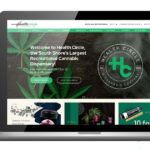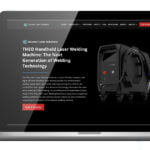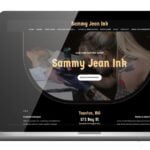As long as the internet has existed, outbound email has remained an invaluable marketing technique. While other outbound marketing strategies have fallen by the wayside, outbound email has been able to stand the test of time thanks in part to its capacity to evolve.
Read on for an in-depth look at what’s new in outbound email marketing in 2019, and how businesses have changed their approach to outbound email in a way that has enabled email to outlast its outbound brethren.
The Stigma Surrounding Outbound Tactics
During the mass media, Don Draper era of advertising, outbound marketing strategies were pretty much the only option businesses had available to them. As a result, people like the telemarketer and door-to-door salesman became acceptable, if not totally beloved attempts by businesses to drive sales.
In this current digital age, however, inbound marketing techniques geared toward people who have shown prior interest in a company’s services are en vogue, and most consumers now associate outbound marketing strategies with unwelcome disruptions:
- Telemarketers interrupt us when we’re trying to relax at home
- TV ads keep us from watching our favorite shows
- Radio ads make us suffer in traffic while we wait for the music to come back
- Internet ads crowd our computer screens
- Direct mail clutters our mailboxes (and then our garbage bins)
Consumers today are so annoyed with the nuisance some outbound techniques pose and the lack of efficiency associated with others, that we’ve made a point of finding ways to avoid them entirely:
- DVR’s let us record our shows and completely skip over the ads when we’re ready to watch. And the emergence of streaming platforms may eventually make cable television altogether extinct
- Satellite radio gives us a pleasant, ad-free driving experience
- Pop-up blockers get rid of pesky banner ads, not to mention the fact that most people have unknowingly trained themselves to block them out with their own selective vision
- Internet searching is far less time-consuming than flipping through the phone book or attending a trade show
- And telemarketers are a lot like travel agencies. They do still exist, but no one has the slightest clue how or why
What Makes Outbound Email Different?
An increasing number of companies recognize that the pushy, salesy, intrusive approach that so often marks other outbound techniques simply doesn’t work with emails. When an email reads like sales pitch spam, it’s destined to have a date with the recipient’s trash folder.
As a result, many businesses are giving their outbound email marketing strategy a full facelift, focusing on crafting emails that potential customers will find valuable and—gasp!—actually want to read.
Here are the latest best business practices that have helped usher in a new, prolific era in outbound email marketing:
Not Selling, but Nurturing
In the past, the only thing that mattered in email marketing was the bottom line. Today, however, many businesses focus not so much on selling, but rather on nurturing their potential customers, i.e. facilitating their specific needs at a given point in time.
The uptick in “nurturing” as a marketing buzzword stems from a recent re-thinking on how the buying process works. The steps between a consumer considering a product and pulling the trigger on a purchase was once perceived to be a basic funnel that ends in one of two ways: the consumer either opts in or doesn’t.
Advertisers today, however, agree that the buying process funnel is actually a nonlinear one that presents marketers with multiple opportunities to reach out to leads. Thus, advertisers are reshaping their outbound email strategy to be one that shirks aggressive, incessant emails for less frequent, more nurturing ones that gently meet the client where they’re at.
Targeted, Automated Content
Perhaps nothing turns off an outbound email recipient more than when it’s irrelevant to them. For example, if you send a 90-year-old man an email with an article entitled “the best cities to host your bachelorette party,” he’ll know it’s an email you’ve sent to everyone as part of an email blast. And you’ve probably just discouraged him from becoming a customer.
Many companies are avoiding this dilemma by emailing targeted content to specific demographics. While you can never guarantee that a recipient will be interested in your company’s services, highly targeted prospect lists with detailed information about potential customers enable businesses to make an educated guess. Plus, advancements in email automation ensure that customers only receive relevant emails at times they’d like to read them.
And businesses don’t just tailor their outbound content based on their target audience’s age. They’re also able to cater content based on where the recipient is in the buying process. So, whether a potential customer has just begun to show signs of interest, is researching your company and comparing it to your competitors, or is just one last nudge away from pulling out the credit card, businesses can send helpful content to nurture them in their decision.
Sales with a Personal Touch
Outbound techniques like sponsored social media ads and Google ads are the digital version of billboards. They’re a great way for businesses to make sure a lot of people see their company’s message. But there’s only such much a business can do to personalize a billboard in a way that speaks to individual people; they can’t control who drives by the billboard and when.
Emails, on the other hand, are the digital equivalent of flyers in the mail. Businesses have total control over which individuals receive their message. And with today’s web data analytics, they can use their knowledge of the recipient and their specific needs in order to craft a hyper-personalized message that makes the recipient feel like it was written just for them.
By packing an email with specific information that anticipates a potential customer’s future needs, businesses can build trust with email recipients, and in turn, build their audience.
Links
Peppering outbound emails with links is a tremendous way for businesses to increase their chances of their email triggering a two-way conversation.
Emails without links, no matter how compelling they are, essentially guarantee that the message remains a one-way conversation. To open up a dialogue and encourage interaction with potential customers, many businesses are relying on links such as:
- Call to Action Buttons – These present the recipient with options for pursuing either services from a company or more information about them. Common examples include lead magnets (i.e. discounts on a company’s services), subscribing to the company’s newsletter (which will give the company an opportunity to flaunt their expertise through targeted content), and the MVP of the group: the opt-in button.
- Internal Links – These lead to the company’s website, blog or social media pages, where potential customers can learn more about the company’s services and check out their relevant written and visual content.
- Subscription Options – This puts the decision in the recipient’s hands as to how often they’d like to receive emails. That way, companies don’t run the risk of badgering potential customers with more emails than they’d care to read and build trust with them as a result
Smartphone-Friendly Content
Consumers check their email from their mobile phones a lot. In fact, studies show that more than half of people with email accounts prefer to check their emails from their phones instead of a laptop or desktop and will use their phone to send a reply nearly 75% of the time.
Businesses are adjusting to this shift by constructing outbound emails optimized for reading on smartphones. An integral part of this is ensuring images and videos are compatible with mobile.
Brevity is the Soul of Outbound
Even the most compelling, beautifully written outbound email is useless if the reader never makes it to the second sentence. Yes, an email should be entertaining, original, and filled to the brim with information. But above all, outbound emails must be concise.
Several companies are taking advantage of the following outbound email formats that grab their audience’s attention and retain it by getting straight to the point:
- Before-After-Bridge (BAB) – This starts with an accurate depiction of the recipient’s current situation, how that situation has room for improvement, and how the company’s services can help the recipient reach that dream scenario.
- Problem-Agitate-Solve (PAS) – This is like a BAB email, but flips the script by, instead of describing how a potential customer’s situation could get better, explaining why it needs to get better and how the company’s services can solve the problem.
- Star-Chain-Hook – This opens with a swooping thesis statement that establishes either the company or the email recipient as the “star of the story,” provides some facts and resources to color the narrative further, and concludes with a call to action.
Conclusion
Every outbound marketing strategy has a bad reputation that precedes it. But while most outbound tactics have a limited capacity to adapt to the changing times, outbound email remains an irreplaceable chameleon.
And companies that employ the above strategies in their outbound email marketing strategies will continue to reap the rewards.
Sources:
1) “Inbound vs. Outbound Marketing – Which is More Effective?” by Lo Jia Thong https://seopressor.com/blog/inbound-vs-outbound-marketing-more-effective/
2) “The Fundamentals of Executing Profitable ‘Outbound’ Email Marketing Campaigns” by Daniel Faggella https://marketingland.com/fundamentals-executing-profitable-outbound-email-marketing-campaigns-113231
The post How Outbound Email Marketing Has Changed in 2019? appeared first on Power Digital.
Article From: "Carly Biggs" Read full article
 SERPCOM is a full-service Boston digital marketing agency focused on improving online visibility, increasing traffic, raising revenue and providing SEO services.
SERPCOM is a full-service Boston digital marketing agency focused on improving online visibility, increasing traffic, raising revenue and providing SEO services.
SEO-first: A fundamentally better approach to online marketing.
Digital Marketing | SEO | Web Design & Development | Search Engine Marketing

SERPCOM is a full-service Boston digital marketing agency focused on improving online visibility, increasing traffic, raising revenue and providing SEO services. SEO-first: A fundamentally better approach to online marketing.
Digital Marketing | SEO | Web Design & Development | Search Engine Marketing
SERPCOM is a full-service Boston marketing agency focused on improving online visibility, increasing traffic, raising revenue and providing SEO services for leading brands.
Maximize the value of your website and turbo charge your online marketing efforts with SERPCOM. Call or click the button and start making the web work for you.
Just click on the Phone Number to dial on your phone:





